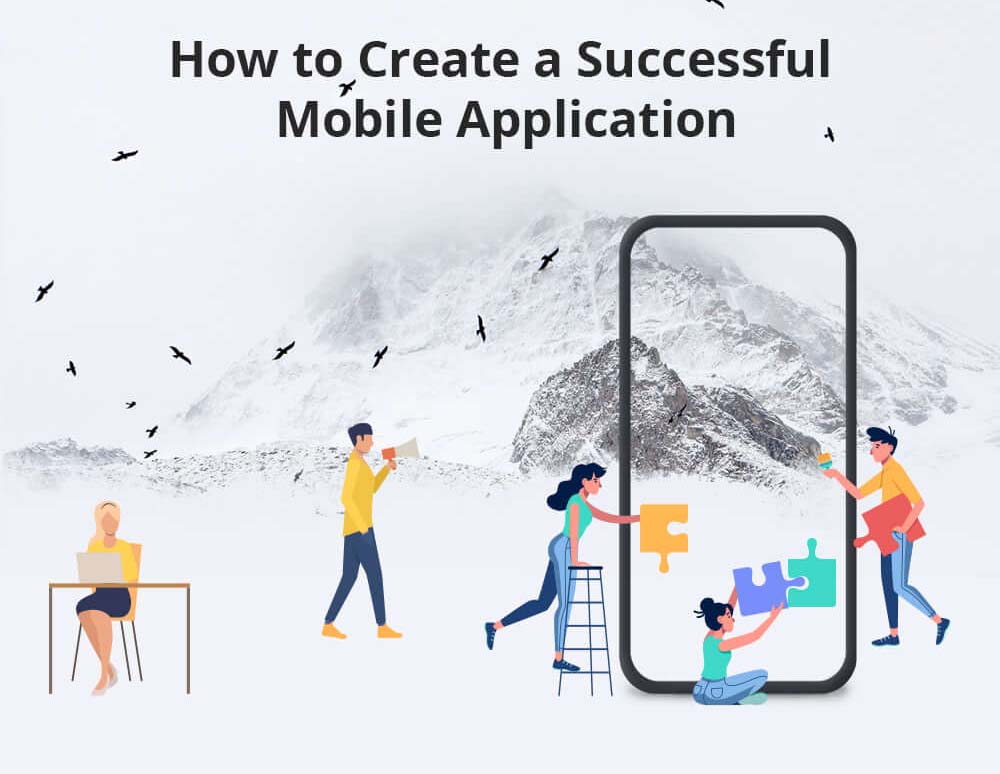How to Build a Successful Mobile App: A Step-by-Step Guide – How to Build a Successful Mobile App A Step-by-Step Guide sets the stage for your journey into the world of mobile app development. With the increasing reliance on smartphones, the demand for innovative mobile applications is at an all-time high, making it essential for aspiring developers to understand the intricacies of the process. This guide will walk you through the key steps necessary to turn your app idea into a fully functional product, highlighting crucial elements from planning to launch.
From identifying your target audience to choosing the right technology stack, this guide will provide detailed insights into each phase of app development. You will learn about best practices, potential challenges, and the resources available to support you along the way. Whether you’re a novice looking to make your mark or an experienced developer seeking to refine your skills, this step-by-step approach will equip you with the knowledge and confidence needed to create a successful mobile app.
In the ever-evolving world of technology, we often find ourselves at the intersection of innovation and necessity. Every day, new gadgets and software emerge, claiming to make our lives easier, more efficient, or simply more enjoyable. However, it’s worth taking a moment to pause and reflect on how these advancements truly impact our day-to-day lives. In this article, we will explore the significance of technology in modern society, addressing both the positives and negatives, while also looking ahead to the future and what it holds for us.At its core, technology serves as a tool that amplifies human capability.

From the invention of the wheel to the latest smartphones, each breakthrough has allowed us to accomplish tasks more effectively. Communication is a prime example. In the past, sending a message could take days or even weeks, but today, with just a few taps on our screens, we can connect with someone across the globe in mere seconds. This instantaneous nature of communication has fostered relationships that transcend geographical boundaries, allowing us to collaborate and share ideas like never before.However, as we embrace the convenience of technology, we must also acknowledge its potential downsides.
The rise of social media, for instance, has revolutionized how we share and consume information, yet it has also contributed to a culture of comparison and anxiety. While it provides a platform for self-expression, it can sometimes lead to feelings of inadequacy as we scroll through curated snippets of others’ lives. Balancing our online presence and mental well-being is now more important than ever, as we navigate an increasingly digital landscape.Moreover, the dependency on technology has raised concerns about privacy and data security.
With every app we download and every website we visit, we leave a digital footprint that can be tracked and exploited. High-profile data breaches have made headlines, reminding us that our personal information is often vulnerable. As we continue to integrate technology into our lives, it becomes crucial to educate ourselves about safeguarding our privacy and making informed choices about the tools we use.The workplace is another area profoundly affected by technological advancements.
Remote work has gained momentum, particularly in the wake of the global pandemic, changing the way we perceive traditional office settings. Video conferencing platforms have become commonplace, enabling teams to collaborate from anywhere in the world. However, this shift also raises questions about work-life balance and the potential for burnout. With the lines between home and work blurring, how do we set boundaries that allow us to remain productive without sacrificing our personal lives?As we look forward, the future of technology holds both exciting opportunities and daunting challenges.
Emerging fields such as artificial intelligence (AI) and machine learning are set to redefine industries, automating tasks and improving efficiency. AI-powered tools can analyze vast amounts of data, offering insights that were previously unattainable. However, this raises ethical questions about job displacement and the responsibility of creating a future where technology serves humanity, rather than the other way around.Furthermore, the advent of smart cities is on the horizon, promising to integrate technology into urban planning to create more sustainable and efficient living environments.
By utilizing data from sensors and IoT devices, city planners can optimize traffic flow, reduce waste, and enhance public safety. This could lead to improved quality of life for residents but requires careful implementation and consideration of the social implications involved.In education, technology continues to reshape how we learn and teach. Online learning platforms have made education more accessible, breaking down barriers for students who may not have had the opportunity to attend traditional educational institutions.
However, this shift also highlights the digital divide, as not everyone has equal access to the internet and technology. Ensuring that all students have the tools they need to succeed must remain a priority as we embrace these new educational approaches.Another significant aspect of technology’s impact on society is its role in healthcare. Telemedicine has emerged as a vital solution, allowing patients to consult with healthcare professionals from the comfort of their homes.
This has been particularly beneficial during times when in-person visits are challenging. However, it also necessitates a robust infrastructure to ensure that all patients receive equitable care, regardless of their location.As we navigate these complex dynamics, the importance of digital literacy cannot be overstated. Understanding how to effectively use technology is essential in today’s world, whether it’s for personal use, professional development, or academic success.
By fostering digital literacy skills, we empower individuals to harness the full potential of technology while being mindful of its risks.In conclusion, technology is a double-edged sword, offering remarkable advancements while also presenting challenges we must address. As we continue to embrace innovation, it’s vital to remain vigilant about the implications of our increasing reliance on technology. By promoting responsible use, prioritizing privacy, and ensuring equal access to digital resources, we can strive for a future where technology enhances our lives without compromising our values.
The journey ahead will undoubtedly be shaped by our choices today, and it is our responsibility to navigate this landscape thoughtfully and intentionally.


